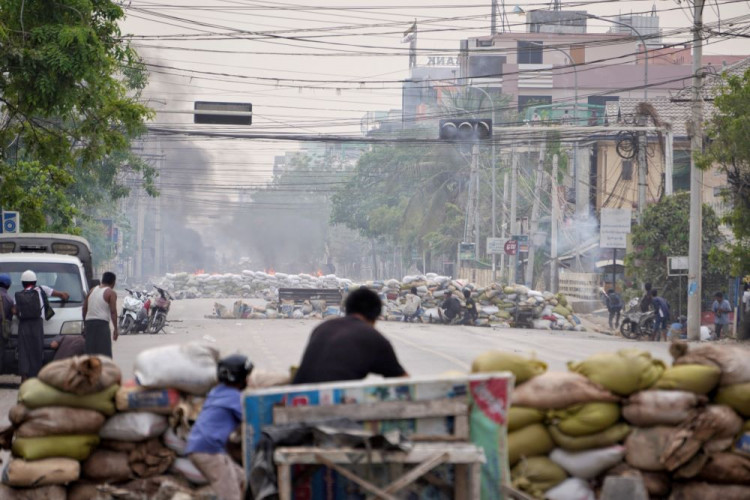The Chinese military is flexing its muscle along the Myanmar border amidst growing conflict in the region, signaling Beijing's heightened concern over regional stability. In a series of moves that have drawn international scrutiny, the People's Liberation Army (PLA) has ramped up its presence along the border and the Chinese navy has increased its engagement in Southeast Asia.
According to the state-owned Global Times, the PLA's Southern Theater Command has deployed howitzers and counter-battery radars as part of an ongoing live-fire exercise near the China-Myanmar border. This military drill, characterized as part of the PLA's annual training plan, is aimed at testing and showcasing the troops' combat capabilities in safeguarding national sovereignty and border stability.
The timing of these exercises coincides with intensified fighting in Myanmar, where the military junta is engaged in a conflict against a coalition of armed ethnic minority groups, known as the "Three Brotherhood Alliance." This alliance has seized several towns, including key trading outposts along the Chinese border, escalating tensions in a region already fraught with political instability.
Beijing's approach to Myanmar's internal conflict has been multifaceted. On one hand, China has carried out intensive anti-gambling operations aimed at countering illegal activities inside Myanmar that the ruling junta relies on for revenue. On the other hand, Beijing has backed certain factions within Myanmar's anti-junta coalition, a strategy fraught with risks given the potential for further political instability along its southern border.
Avinash Paliwal, a senior lecturer at SOAS, University of London, highlighted the complexity of China's position in an interview with Newsweek. "What began as a kind of parochial interest might take on a whole different character if there's an offensive against the state of Myanmar and the armed forces of Myanmar. That is something I don't think China desires," he said.
In a parallel development, three Chinese navy ships, including the guided-missile destroyer Zibo and the guided-missile frigate Jingzhou, arrived in Myanmar for a four-day goodwill visit. This visit, as reported by the Global New Light of Myanmar newspaper, includes naval security exercises with Myanmar forces and reflects China's increased defense engagement in the region following the lifting of zero-COVID restrictions.
The Chinese naval visit and the PLA's military drills underline Beijing's strategic efforts to stabilize its border area while projecting power in Southeast Asia. These developments also underscore the broader geopolitical implications of Myanmar's internal conflict, with China positioning itself as a key player in a region marked by shifting alliances and escalating tensions.






